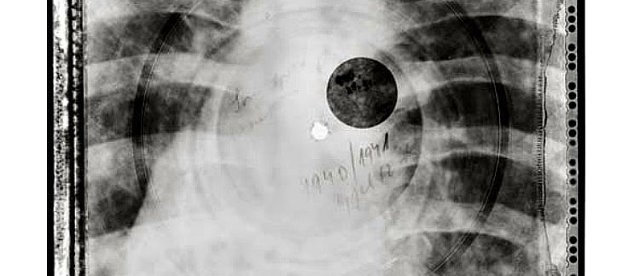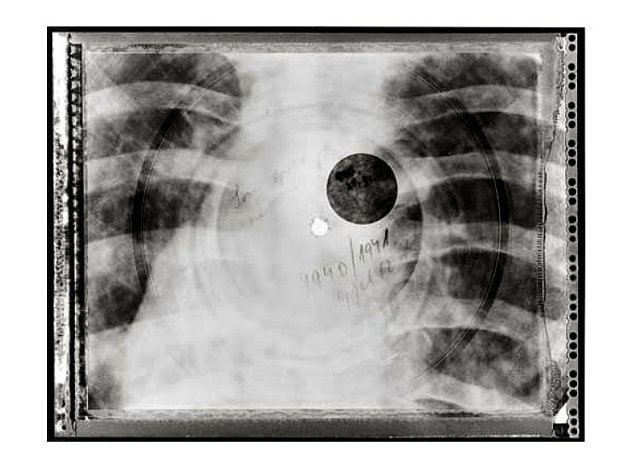When X-Rays Recorded Music

The goal was simple: listen to music, specifically Western rock and roll. The problem: Those striving to reach that goal weren’t in the United States or anywhere else rock was popular. They were in the Soviet Union, and it was the 1950s. And Josef Stalin and his successors weren’t fans of anything American, and certainly not of rock and/or roll.
But the Soviets couldn’t stop it — just like today, fans of music found a way to copy and share songs.
For years, people have been sharing music online without the permission of the copyright holders. Now the protocol of choice is BitTorrent and similar methods, but ten years ago services like Napster and Kazaa were common ways to get access to some popular songs. And before the Internet, the story was the same, but with different methods. People would “rip” music from CDs and burn new ones, and before that, cassettes were the medium du jour. You could copy tapes pretty easily, or record songs off the radio and make a mixtape for a friend.
Soviet fans of Elvis and Chuck Berry were no different than the music-lovers who used the tools above. But their love of rock and roll came decades before we all went digital and even before the invention of cassettes. They could have created copies of records by etching the songs into vinyl, but that material was hard to come by in the region. So they found another solution: X-ray films.
X-ray imaging was rather common at the time in the Soviet Union. The films, once used and reviewed, were often tossed away with the garbage, making them cheap. And as it turned out, these films were capable of being grooved much like vinyl could, and then be played on turntables. FastCo Design outlined the process:
Using a standard wax disk cutter, the stilyagi [and underground community of Soviet fans of Western culture] would copy Western records that managed to make it into the Soviet Union through satellite countries such as Hungary.
They would then etch a copy of an album into the X-Ray, cut it into a crude circle with manicure scissors, and use a cigarette to burn a hole in the middle, allowing the record to be played on any turntable.
The sound quality wasn’t nearly as good, of course, and music could only be recorded on one side of the film. But it was good enough and, therefore, popular among the stilyagi and others. Understandably, the trend earned the nickname “bone music,” and for much of the decade, Soviet teens (and older) were able to share the tunes their American counterparts lived by — but the music came with pictures of some random citizen’s bones.
In 1958, the trend came to a screeching halt. That year, as Colossal notes, “the authorities caught on and the act of making x-ray records was made illegal.”
Bonus Fact: From the 1930s until the 1970s, people in the U.S., UK, Canada, Germany, and a few other nations could get their feet x-rayed at the shoe store. The reason was more gimmick than podiatry. Using a device called a “shoe-fitting fluoroscope” — a type of x-ray imager — shoe salesmen would let kids watch their toes wiggle while telling grown ups that the device guaranteed a great fit. In reality, though, the fluoroscope couldn’t help determine how well a shoe would perform, as it didn’t account for the flesh and muscle. (It did, however, let kids see their bones.)
From the Archives: Make Your Own X-Rays: All you need is a vacuum and some Scotch tape.
Take the Quiz: Bones or not bones? Pick the former, ignore the latter.
Related: A collection of x-rays of broken bones. I have absolutely no idea why anyone would want to buy these, but your interests may vary.

